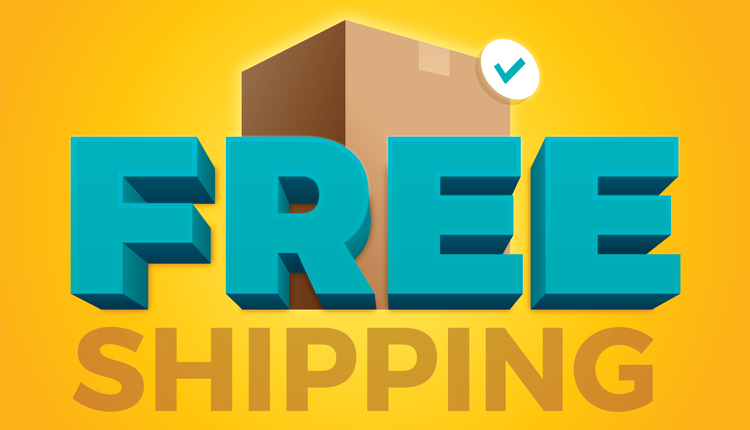A third-party logistics (3PL) provider typically offers services that include receiving, storing, and managing inventory, as well as picking and packing orders to ship to your customers. The 3PL can have a single location or several, and most 3PLs typically serve multiple clients. Some are geared specifically towards explicit industries or commodities, and some cover a large array of products. The 3PL can complement the existing operation by serving areas that are unfulfilled or replace the entire operation, eliminating the need to manage many aspects of one’s supply chain. Due to the purchasing power and varying degrees of sizes, weights, and commodities, it’s also common that the 3PL will have partnerships with multiple carriers, often within parcel, postal, and freight, providing shipping options that may be otherwise unattainable.
What kinds of shippers would best benefit from utilizing a 3PL?
Choosing to outsource perhaps the most critical part of one’s operation to a 3PL is an important decision that should be evaluated based on several factors, since it’s a great option for some, but may not be a good decision for others. Start-up or expansion costs associated with warehousing, distribution, labor, and infrastructure can be overwhelming, especially for small- to mid-market companies. Larger firms may find greater value in utilizing a 3PL to expand operations into new markets, improving transit times and reducing shipping costs due to the shorter linehaul.
In either case, determining if there is a need for distribution from a specific location or locations, and what is driving that decision, is a good initial step. For a start-up or fast-growing business, where either an investment in infrastructure or utilizing a 3PL is a necessity, the answer may be that obvious. On the other hand, if volume has stabilized and there is limited upside resulting from expansion, the decision to utilize a 3PL may not be ideal.
What to account for when selecting a 3PL vendor
Based on the parameters stated above, it should first be determined if partnering with a 3PL is the best decision for long-term success of your organization. There are several factors to consider when choosing a 3PL:
While most 3PLs can manage a variety of commodities, some 3PLs specialize in specific types. Some are equipped for cold fulfillment, with warehouses that can store and ship food and products that need refrigeration. Other 3PLs store and ship hazardous materials, parts, apparel, high-SKU-count product lines, low-SKU-count product lines, valuable goods, etc. Narrowing the list is a good starting point, to ensure that the 3PLs specialties align with one’s needs.
Suitable origin point(s) is another criterion that tends to be high on the decision-making list. In the US, most companies can effectively serve 95% to 99% of their clients in two days with three distribution centers and in three days with two DCs. In recent years, it has become more common to have an east coast and a west coast presence, at a minimum, to eliminate four-to-five-day deliveries, often carrying into the following week. Others may choose to utilize additional DCs, located strategically to offer next-day or two-day delivery, as the pressure to improve delivery time continues. Rather than dealing with purchasing or building a facility and managing the associated operating expenditures, many companies have found that a 3PL is the more viable option.
How a 3PL operates is important to establish upfront, including something as simple as cutoff times for that day’s pick and pack? How quickly are the shipments picked, packed, and processed? Orders should go directly to fulfillment warehouses, just as they would to company operated DCs. There the items are picked, packed, and boxed based on established parameters. The label is applied based on the carrier chosen. This process can be highly manual or fully automated, or a combination.
There are pros and cons to consider in utilizing a 3PL
Some pros include the following:
· The need to manage labor and the operations is reduced, as is the need to hire and train new employees. A reputable 3PL will have knowledgeable employees, including onsite logistics experts.
· Based on the anticipated growth, the increased revenue could significantly improve profits. The 3PL process can reduce the cost of labor, and reduce shipping costs, due to the origin point being in closer proximity to the client base.
· Customer experience may improve. With additional facilities, time in transit should improve, due to the shorter distance and additional carriers being available based on capabilities.
· Many 3PLs will offer additional services to help manage the distribution process, which can improve customer service.
There are also some cons to consider:
· Losing visibility and “ownership” of the goods and processes can be a deal-breaker for some. Although one can typically monitor inventory levels, incoming shipments, delivery performance, and more in real time, there is an undisputable loss of control when outsourcing.
· Choosing the right 3PL could be a learning process with some trial and error. Not all 3PL providers will meet one’s expectations (are the expectations realistic?). Taking the time to find a reliable partner to work with from the beginning will be important.
· The initial investment in a 3PL partnership will impact profits, especially if the alternative is to keep the operation as-is. If utilizing a 3PL doesn’t result in increasing inventory volumes and sales, it may be simply an added expenditure.
· Some 3PLs’ expectations will not align that of their customers. Their inefficiency could reflect poorly upon your organization. Customers care about the end result, not who manages the distribution. Setting the expectations of the services that are needed is critical during the decision-making process.
There are several potential pitfalls that can be avoided if the proper steps are taken.
The agreement should be well-defined and clearly address the time period of the arrangement, renewal expectations, and termination options for both parties, including when price increases will occur and at what levels. Liabilities for damages and the percentage of shrinkage loss must be clearly addressed. The typical insurance that each party will maintain should be included. How inventory will be managed, and all the clauses related to it should also be defined in the contract. IT services that will be used throughout the period, including costs, should be established, and the contract should highlight the methods that will be used to settle any legal affairs.
Expectations about service performance, carrier options, packaging, and any such details should be clearly established. Will a single account manager be assigned for the duration of the agreement? Can either party hire employees from each other or can the 3PL sell other services to your client base? Will the 3PL be permitted to advertise your business name on various marketing platforms?
It's also important to examine the financial and overall health of the 3PL. For example, is the 3PL asset-based or non-asset based? Asset-based 3PLs have more direct control over issues that may be encountered. Is the 3PL paying its carrier invoices? If they get shut off, you can get shut off, even if you’re shipping on your own carrier agreement.
Partnering with a quality 3PL provider can significantly improve the success of an organization. However, it’s extremely important to properly assess and evaluate the options before deciding if it’s the right decision and which partner is the best option.
Thomas Andersen is Partner/EVP of Supply Chain Services for LJM Group.
This article originally appeared in the July/August, 2023 issue of PARCEL.





![GettyImages-911045162-[Converted]](https://cms-static.wehaacdn.com/parcelindustry-com/images/GettyImages-911045162--Converted-.2298.widea.0.jpg)












